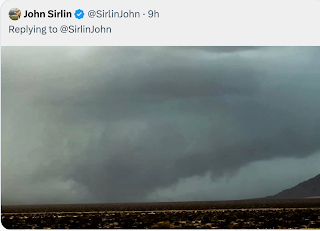Tornado Types
According to the dictionary, a tornado is:
a violent destructive whirling wind accompanied by a funnel-shaped cloud that progresses in a narrow path over the land
1. Associated with supercell thunderstorms. The Greensburg Tornado would be an example. The rain-wrapped tornado below was produced by a supercell thunderstorm.
2. Associated with strong lines of thunderstorms, sometimes known as squall lines.
3. “Landspouts” which are associated with a low pressure system in the upper atmosphere (and includes the remains of huiricanes and tropical storms)
4. Gustnados which occur when dense cold air rapidly flows out of a thunderstorm into warm air flowing the opposite direction. Think of a pencil placed between your right hand moving away from your body and your left hand moving toward your body. The spinning pencil would be a gustnado. It is the weakest form of tornado. Because of their brief existence (often tens of seconds), they are the most difficult to photograph.
My good friend Jim Reed caught several gustnadoes to the southeast of Wichita Wednesday evening. In this instance, there is no visible funnel at cloud base.
This gustnado photo does show a funnel but it is questionable whether the funnel at cloud base is directly connected to the gustnado.
sWhile gustnadoes are not in the same league as a Greensburg tornado, they are still dangerous. They can overturn a tractor-trailer or a non-tied down mobile home and, as such, post a threat to life and limb. Because their duration is so short, they can be difficult to warn of. The Wichita meteorologists did a great job Wednesday evening in a tricky and violent situation.






Comments
Post a Comment